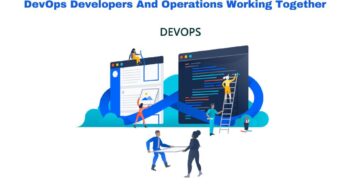To understand how exactly banking-as-a-service works, we will use an example. Suppose that you are the manager of a taxi sharing company, and currently, you are facing challenges and looking for ways to expand your customer base. As a marketing gimmick, you choose to offer your customers a debit card, which gives them points redeemable for your app.
Such a thing allows you to tailor customer service to each customer’s expense. You can analyze how customers use their debit cards and personalize your service based on it. Moreover, you can also use various means like text messages, emails, and interactive touchpoints to promote your business.
There are numerous ways for any business or non-banking institution to generate more revenue by providing its own banking services. However, if you want to offer banking services, you need to have a banking license. And this is where banking-as-a-service can help. Companies have long been requesting banking services, but these services are often too expensive or do not comply with international baking regulations. BaaS allows organizations to offer banking-related products and services at a fraction of the cost compared to traditional banking systems without needing a banking license.
What is BaaS?
Open Banking-as-a-Service(BaaS) API describes the partition of the banking infrastructure and the ability to use certain banking functions with the help of open banking API.
The functions and the information these APIs provide can be easily used by FinTech companies or any third-party developers using the digital platform to develop new financial solutions for consumers and businesses.
Banking-as-a-Service or BaaS represents an approach in which banks offer financial solutions through applications built on top of their API. BaaS is pretty popular nowadays since it allows businesses and consumers to enjoy. The advantages of modern banking without the requirement of physically interacting with the bank.
Such a thing allows non-banking businesses like your taxi rental company to offer digital banking solutions like mobile banking, mobile bank accounts, debit cards, and loans without the requirement of a baking license.
The bank’s internal system communicates with the taxi fleet via APIs and webhooks, and this allows customers’ accounts to be directly accessible through the taxi fleet website or app. Instead of working as an intermediary between the client and the banking institution, the taxi company simply works as an intermediary, which suggests that it is not burdened with any of the bank’s regulatory responsibilities.
Thus, thanks to the help of banking as a service, almost any company can work as a bank. Utilizing the power of the cloud and bank account Opening API verification, companies can create an entire bank in one line of code. The organization controls its own financial service infrastructure without investing too much in excessive systems and hiring personnel. Such a thing is also known as “white labeling” since banking services are provided with the help of the non-banking institution.
How Banking-as-a-Service works
Nowadays, Banking-as-a-Service has become a valuable and innovative financial technology solution that allows faster and flexible provision of banking services. BaaS solution providers have already shown the ability to deliver banking services with the help of an open banking API that can be easily implemented and launched in a short time interval without the requirement of large capital or monetary licenses.
APIs can be easily consider the building blocks of a basic digital banking platform. They are usually organize into logical groups that you can utilize. To create several functions such as creating and setting up accounts, withdrawals, deposits, and loans.
Here is an explanation of the API-based 3-tier Banking as a Service stack:
- The bottom tier is a traditional, nationally licensed financial institution (bank) that collaborates with a BaaS provider commonly known as the Infrastructure as a Service (IaaS) layer.
- The “Banking as a Service” layer in the middle represents banking services that have been create as a medium. For FinTech startups and other companies to deliver products to end consumers. This stack member works as an intermediary between the financial institutions. And FinTech, transmitting data back and forth using the BaaS provider.
- The top layer has been acquire by FinTech companies that receive data from consumers regarding their transactions. After that, it transmits this information to third-party BaaS providers. BaaS providers, in turn, transfer information received from banks to the FinTech companies.
BaaS is an effective medium that enables banks and financial institutions to scale out their underlying banking infrastructure. However, the current popular model needs an intermediary. A better, reliable, and affordable solution would be for banks to create their own dedicated BaaS solutions. Such a thing will allow organizations to connect with core banking infrastructure without the requirement. For a third-party vendor to work as an intermediary. Organizations can also create and sell products to customers directly utilizing this new protocol instead of using a separate product. With the help of a new platform, they can offer their consumers a broader range of services. And even tailor-made products such as loans, credit cards, and insurance.
API-based Open banking
The Application Programming Interface (API) has been a critical element of software development. For decades as a way to develop for a particular platform. Recently, several vendors of modern platforms, from Salesforce to Facebook and Google, have offered APIs to help developers. Create specific programs to meet the requirements of consumers. In addition, a new generation of third-party APIs now provides features that free developers from working on a specific platform. And enables them to create more efficient programs to meet the requirements of the present customers. Thanks to this, developers can now focus on creating a feature-rich product and also incorporate it with functional distributed processes developed by others, which they can access through the open banking API.
Developers understand also that most of the features they need to build into an application are redundant. Compare to what many other developers are working on. They have understood not to waste time on resources reinventing the wheels. But instead rely on APIs readily available from larger platforms. Another significant advantage is that third-party APIs are usually much better.







